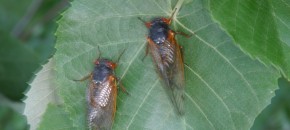
There has been a lot of press about the emergence of Brood II for the periodical cicada (Magicicada spp.) and it can either be an exciting time or one that’s a little nerve wracking!
Continue reading...Rutgers Cooperative Extension

There has been a lot of press about the emergence of Brood II for the periodical cicada (Magicicada spp.) and it can either be an exciting time or one that’s a little nerve wracking!
Continue reading...By Mark VanGessel, Extension Weed Specialist; mjv@udel.edu Preemergence herbicides will provide a period of residual weed control, based on rate and incorporation. Typically we can expect 3 to 5 weeks of residual control in most situations. So if our preemergence herbicide application is made 3 to 4 weeks before planting, we can expect weeds starting […]
Continue reading...By Mark VanGessel, Extension Weed Specialist; mjv@udel.edu Due to the seriousness of glyphosate-resistance, and the tendency of Palmer amaranth to develop resistance to glyphosate, UD Weed Science recommends: 1. The field should be clean at planting, using effective burndown herbicides or tillage; 2. Use a residual herbicide, applied as close to planting as possible (within […]
Continue reading...By Mark VanGessel, Extension Weed Specialist; mjv@udel.edu The label for Sharpen and other Kixor-containing herbicides says not to apply with any other Group 14 (PPO herbicides) or within 30 days of other Group 14 herbicides. Other Group 14 herbicides include flumioxazin (Valor, Valor XLT, Envive, Fierce, etc), Anthem, fomesafen (Reflex, Prefix, Flexstar numerous generic products). […]
Continue reading...By Mark VanGessel, Extension Weed Specialist; mjv@udel.edu Working with Bill Bamka, County Extension Educator from Burlington County NJ, UD Weed Science Program confirmed that a population of common ragweed in New Jersey is resistant to glyphosate. The long-term history of the field is not known, but the past couple of years it was planted with […]
Continue reading...By Mark VanGessel, Extension Weed Specialist; mjv@udel.edu This is an article written by Dwight Lingenfelter and Bill Curran from Penn State and modified for Delaware. As more farmers use vertical tillage to manage crop residues or to mellow the seedbed prior to planting (especially soybeans), questions have arisen about possible impacts of using these types […]
Continue reading...
